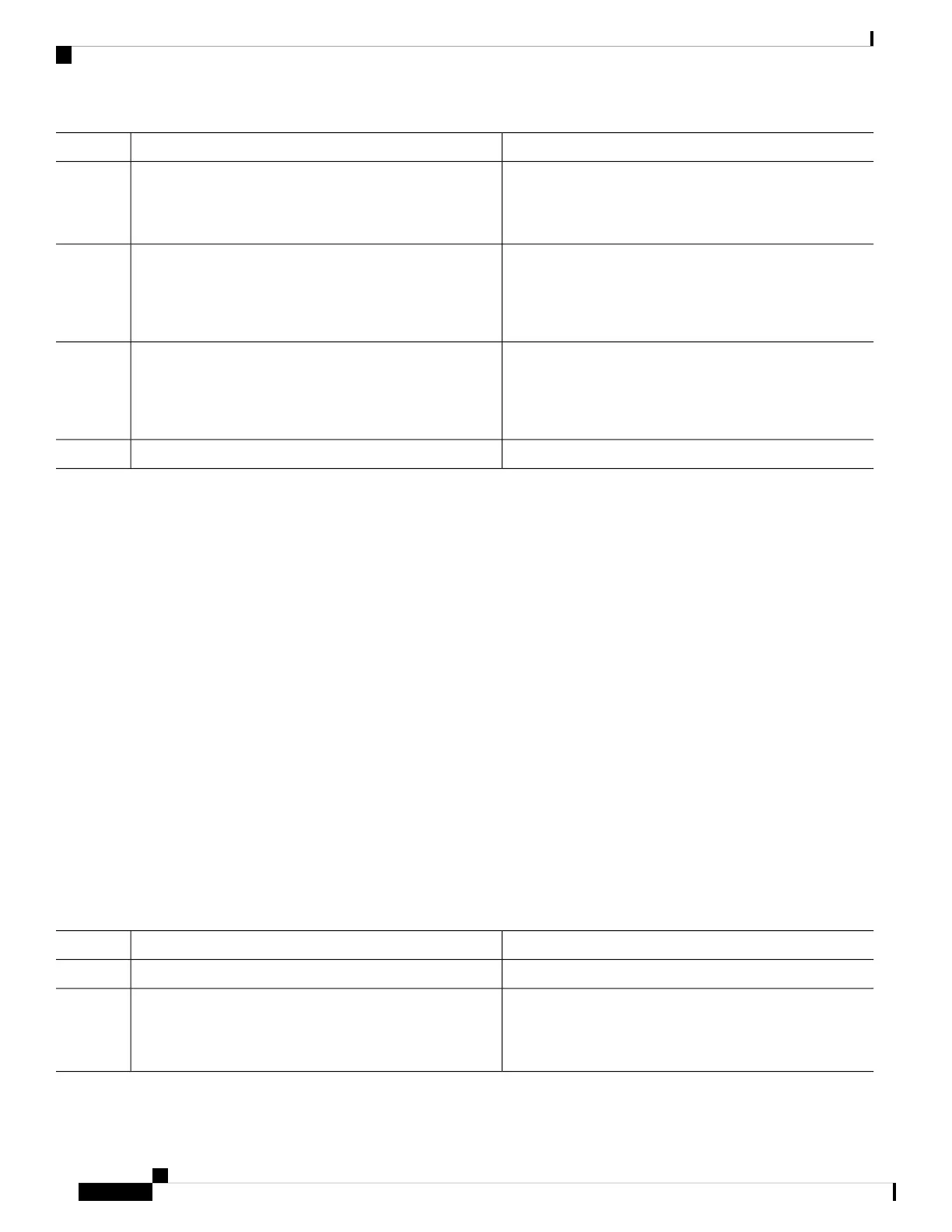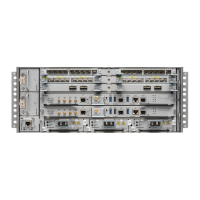PurposeCommand or Action
Specifies the BGP AS number and enters the BGP
configuration mode, allowing you to configure the BGP
routing process.
router bgp as-number
Example:
RP/0/RP0/CPU0:router(config)# router bgp 100
Step 5
Specifies either the IPv4 or IPv6 address family and enters
address family configuration submode.
address-family {ipv4 | ipv6} unicast
Example:
Step 6
RP/0/RP0/CPU0:router(config-bgp)# address-family
ipv4 unicast
Allows the redistribution of AiBGP metric into OSPF.
redistribute ospf osp route-policy plcy_namemetric value
Example:
Step 7
RP/0/RP0/CPU0:router(config-bgp-af)#redistribute
ospf osp route-policy aigp_policy metric 1
commit
Step 8
Configuring VRF Dynamic Route Leaking
Perform these steps to import routes from default-VRF to non-default VRF or to import routes from non-default
VRF to default VRF.
Before you begin
A route-policy is mandatory for configuring dynamic route leaking. Use the route-policy route-policy-name
command in global configuration mode to configure a route-policy.
SUMMARY STEPS
1. configure
2. vrf vrf_name
3. address-family {ipv4 | ipv6} unicast
4. Use one of these options:
• import from default-vrf route-policy route-policy-name [advertise-as-vpn]
• export to default-vrf route-policy route-policy-name
5. commit
DETAILED STEPS
PurposeCommand or Action
configure
Step 1
Enters VRF configuration mode.
vrf vrf_name
Example:
Step 2
RP/0/RSP0/CPU0:PE51_-9010(config)#vrf vrf_1
Routing Configuration Guide for Cisco NCS 6000 Series Routers, IOS XR Release 6.4.x
88
Implementing BGP
Configuring VRF Dynamic Route Leaking

